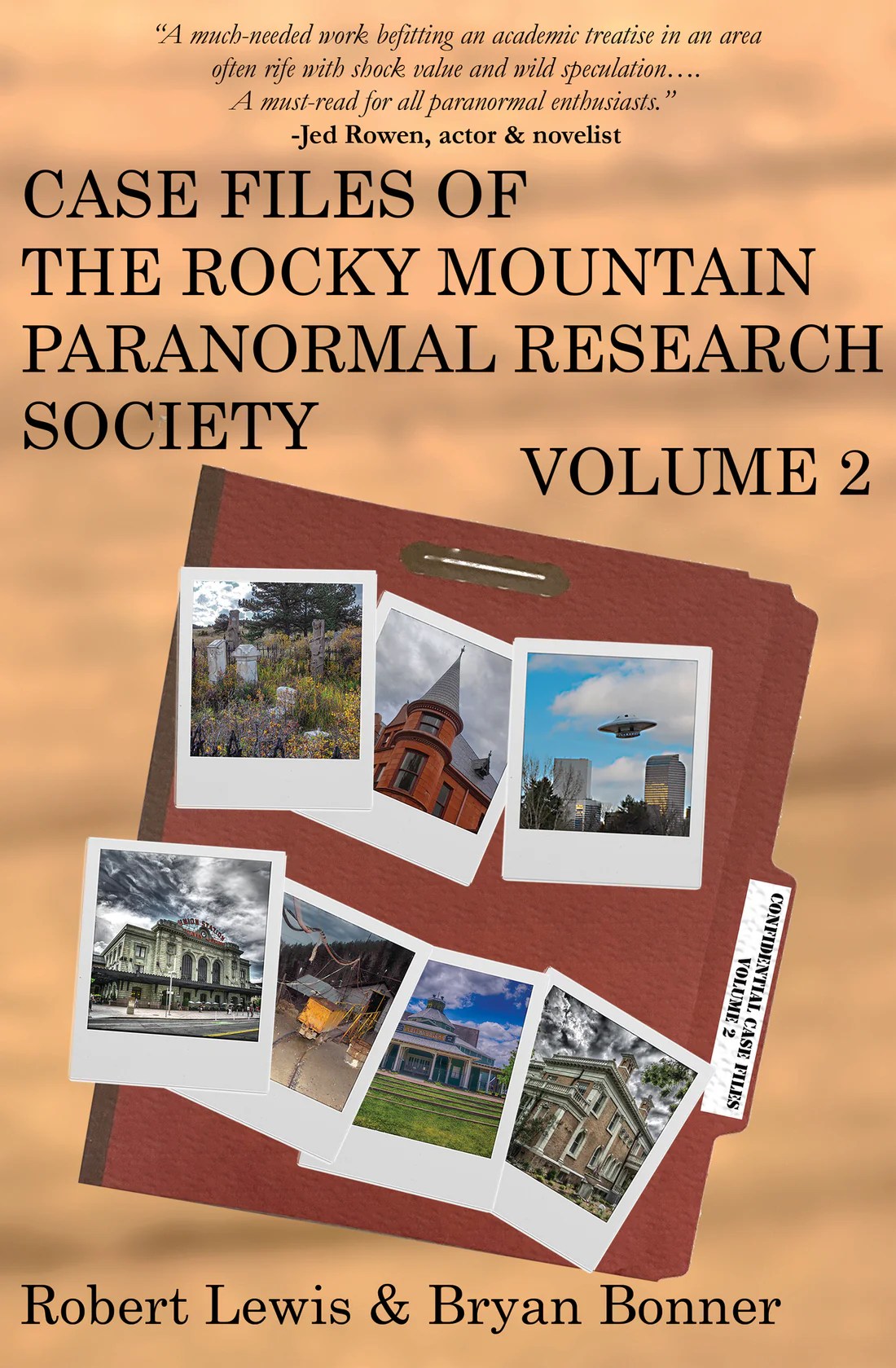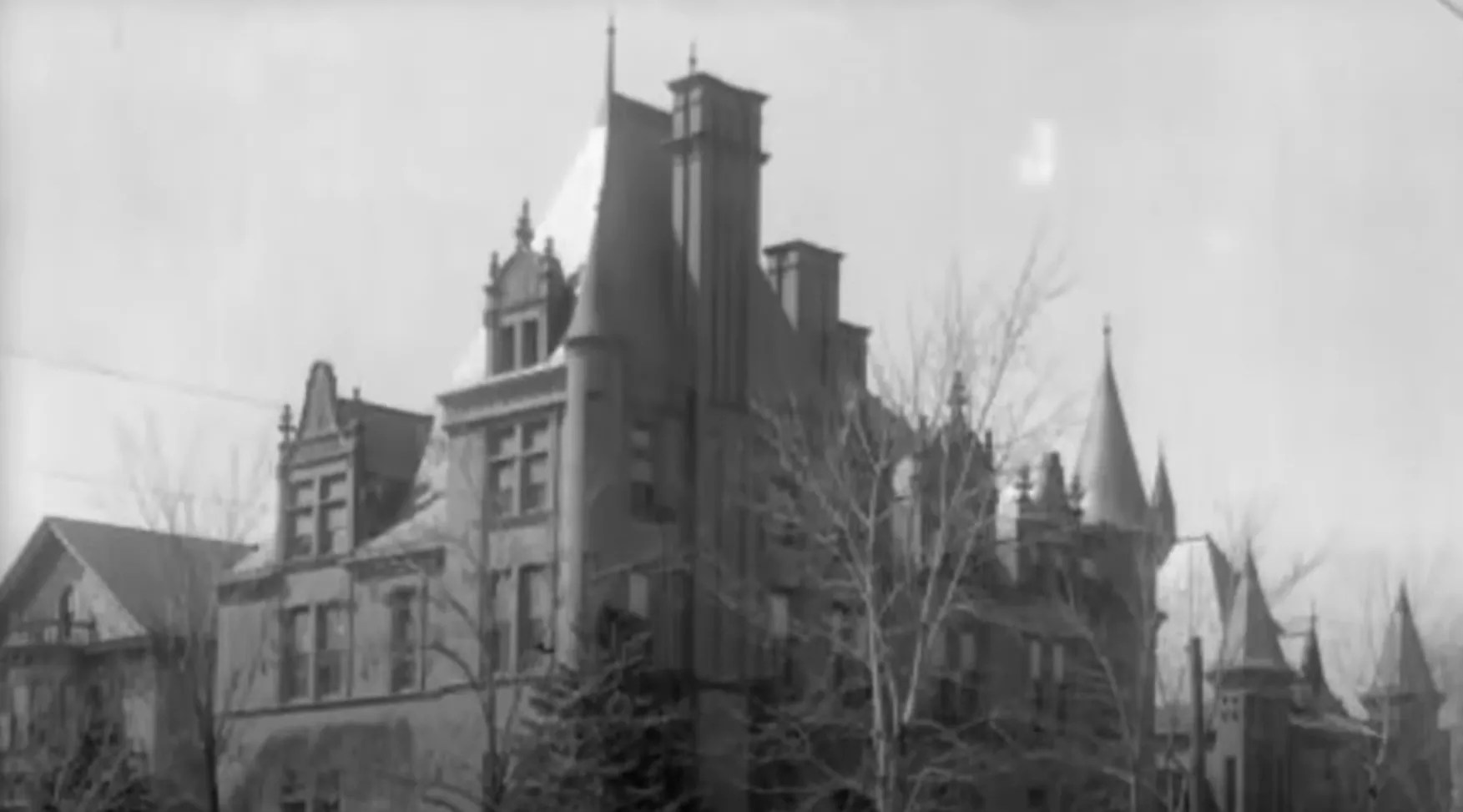

Audio By Carbonatix
The first volume of the Case Files of the Rocky Mountain Paranormal Research Society (RMPRS) starts with this dedication: “To all those whose lives are remembered through ghost stories and folklore.”
It’s an appropriate mission statement for the dynamic duo of Denver authors Robert Lewis and Bryan Bonner, who say they do what they do – and write about it – to pay homage to the “enduring presence” of spirits they seek to record and document.
Those tales of things that go bump in the night continue in their new book, Case Files of the Rocky Mountain Paranormal Research Society, Volume 2, now available at local bookstores and on the Polymath Press website.
“Our overall purpose is to do our best to get to the bottom of paranormal claims,” says Lewis. “If that means finally finding the real scientific proof or evidence of ghosts or aliens or whatever other paranormal entity, that’s about the most exciting thing we can think of. On the other hand, if it means helping people understand that what they’ve been experiencing has a natural explanation and they don’t need to be afraid of something spooky in their house, that also seems like a good day’s work.”

RMPRS
The RMPRS was founded by Bonner more than 25 years ago, when he wanted to examine paranormal activity in the Rocky Mountain region but found himself disillusioned with how the process was being handled by others with similar interests. “Most other groups out there at the time were either too eager to believe or too eager to dismiss rather than investigating with an open mind,” says Lewis, who adds that Bonner started his own group to direct the investigations more analytically and scientifically. Lewis joined the project a few years later.
“We’re dyed-in-the-wool horror nerds,” Lewis says, “so we’re drawn to the spooky stories. But we’re also dyed-in-the-wool science and history nerds, so we’re looking for a certain quality of evidence. Therefore, we take a skeptical approach, but in the true sense of the word – that is, we insist on remaining neutral about whether any individual case is paranormal or not until the evidence is in. And we have to be comfortable with ‘I don’t know’ as an answer.
“We’re just almost-academics,” he jokes. “We’re the kinds of people who read history books and scientific papers for fun, so when we investigate a case or set out to write up our findings, we’re as interested in the historic background or technical side of things as we are in the ghost stories.”
But he quickly asserts that it’s more than that: “It’s also partly a conscious decision to let that [science] shine through in the final drafts, because there don’t seem to be many others out there who take that approach,” he says. “Most people who like the ghost stories tend to avoid the academic side of things, and most who write about the academic side of things don’t tend to give the ghost stories their due.”
The Case File books are more recent additions to the RMPRS to-do list – something for which Lewis claims credit. “The idea for the book series started when I joined up,” he says, in part because of his own studies in the writing undergraduate program at CU Denver, and a sincere passion for writing. “Once we started discussing it, we quickly realized we had way too much for a single book, so we set about dividing the case files up into collections. We now have two books on the market, a third in the works, and enough case files left over for at least a fourth. And we’re still out there gathering new stories.”
Those new stories come straight from old Denver. Lewis and Bonner continue to plumb the depths of phenomenons in many city staples: the Denver Press Club, the McClelland School, the County Jail, Union Station and more. And they don’t limit themselves to just metro Denver; they’ve studied the Stanley Hotel and Elkhorn Lodge in Estes Park and the Phoenix Mine in Idaho Springs, as well.
Lewis says that there are almost too many promising sites to cover, and many are personal favorites of his. “It’s honestly hard to choose,” he admits. “Even just limiting ourselves to the Denver area, there are so many, it’s like trying to choose a favorite child. But I’d have to say one of the biggest standouts is Cheesman Park [covered in Volume 1]. Partly that’s because it has one of the richest histories we’ve been able to write about, but also because that was a case that really brings together all the elements we like: We got to play historians digging up some of the lesser-known parts of its history, to play scientists working with forensic anthropologists to study some of the bodies that were unearthed in the park, and to play ghost hunters working on the various paranormal claims in the park.”

The Croke-Patterson Mansion back when its ghosts might still have been drawing breath.
His choice for most notable haunt from Volume 2 is the Croke-Patterson Mansion. “That one has collected so many ghost stories it might very well be one of the most written-about haunts in Denver,” says Lewis. “Plus, it’s a magnificent old building that, again, has a rich history. And perhaps one of the single most memorable odd things we discovered on an investigation, maybe actually the winner for just plain weirdest…but we’ll leave that as a tease for people who want to read our second book.”
The still-unreleased third volume, according to Lewis, will include one of Denver’s most historic sites and one of its first brothels: Mattie’s House of Mirrors, the Market Street legend that’s now part of Dierks Bentley’s Whiskey Row.
“When we investigated, it was operating as a restaurant – though now it’s unfortunately no longer open as an independent venue and most of the interior has been replaced,” he says. “But it’s another of those places with not only a remarkable history, but a good number of weird occurrences during our investigation, including some strange anomalies with the lights and an audio recording of two distinct but unintelligible voices from an unknown source.”
It’s evidence such as those voices that Lewis and Bonner continue to search for – and Denver’s past seems only too happy to provide.
The Case Files of the Rocky Mountain Paranormal Research Society, Volume 1 and Volume 2, are available now on the Polymath Press website.